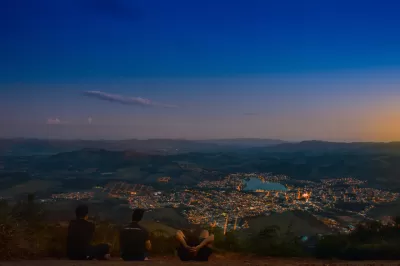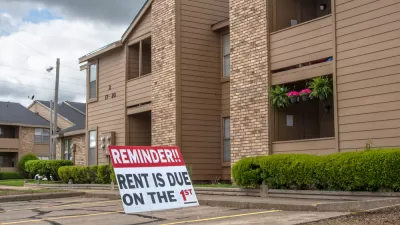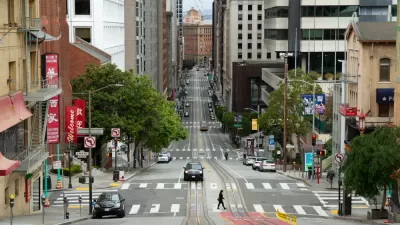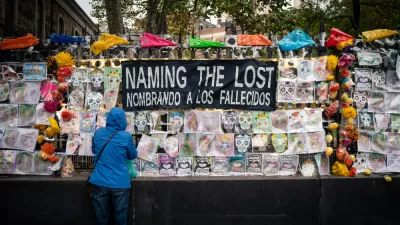The most promising cities after COVID won't necessarily be the same that were ideal before.

As the COVID-19 pandemic continues, it's become evident that its effects will be long lasting and far reaching. These broad economic and cultural shifts will impact cities in various ways, benefiting some while straining others.
The most promising cities after COVID won't necessarily be the same that were ideal before. Here's a closer look at these cities and how the pandemic is affecting their future.
Cities That Will Benefit
While many industries suffered under COVID-19, the tech sector is a notable outlier. Digital technologies saw seven years' worth of advancement in a few months, leading to skyrocketing profits for the tech industry. As a result, cities with high education levels and blossoming tech sectors are likely to thrive.
At the same time, old tech hubs like Silicon Valley might not see the same recovery. Thanks to the rise in remote work, prospective workers can find employment virtually anywhere. This trend gives preference to newer centers of growth with lower costs of living.
1. Raleigh, North Carolina
Raleigh, North Carolina, is in an ideal position to thrive after the pandemic subsides. Its tech sector has seen remarkable growth over the past few years, while housing costs are relatively low. It's also home to several universities, which will be valuable in post-pandemic recovery.
Raleigh also has a much smaller population than older urban centers like New York or Los Angeles. Lower population density will help the city recover from the pandemic faster and appeal to new residents.
2. Tucson, Arizona
Like Raleigh, Tucson, Arizona, features a high education level and a low population. That combination will likely mean a wider availability of high-paying jobs as COVID-19 starts to fade. New workers might flock to the city, bringing more talent and income.
Tucson also benefits from its proximity to Los Angeles. It's far enough away to offer a different environment, but close enough that moving isn't too inconvenient. Workers looking to escape crowded, expensive cities after COVID, like L.A., might see Tucson as a promising alternative.
3. Boise, Idaho
Most of Boise, Idaho's, largest industries are those that will thrive in the post-pandemic world. It's home to Micron Technology, and it has a strong, growing tech sector. Its renewable energy industry is also blossoming, which will be increasingly crucial after the pandemic.
Boise's cost of living is only 4% above the national average, making it attractive to post-pandemic workers. Like Tucson and Raleigh, it also boasts high levels of educational attainment.
Cities That Will Have Difficulty
Not all cities after COVID will fare as well as Raleigh, Tucson, and Boise. Just as some industries will thrive in post-COVID America, some have a long, challenging recovery ahead of them. Areas reliant on in-person retail or tourism won't likely see a V-shaped recovery as some have hoped.
For example, while 60% of surveyed shoppers said they'd shop in person as soon as they could, few did. It seems that people won't rush back to pre-pandemic practices as soon as it's possible. Pandemic fears will linger, which will also hinder the growth of larger cities after COVID subsides.
1. New York City
It's difficult to speak on cities and the pandemic without mentioning New York. The major metropolitan area features a high cost of living and population density, both of which are unfavorable in the public perception about the risks of infection. While the city does have a highly educated workforce, these factors inhibit any fast recovery.
Now that work-from-home models are more common, people could start to move away from large cities. As the most populous city in the United States, New York will feel this effect more than most.
2. Honolulu
Tourism-dependent cities and the pandemic have had a remarkably negative relationship. As lockdown orders and fears over the virus prevented people from traveling, these areas suffered. Honolulu was one such city, and will likely to continue to have difficulty.
Tourism, like in-person retail, likely won't see a V-shaped recovery after the pandemic. Since Honolulu's economy relies heavily on tourism, this trend will hinder its growth. Its high cost of living will also prevent new workers from moving to the city.
The Pandemic Will Change More Than People Might Realize
When the COVID-19 pandemic subsides, it will leave a different world behind. Health systems won't be the only thing to change. Cities themselves, as seen in this list, will see substantial shifts after the outbreak.
The post-COVID world will bring new life to some cities while it will cripple others. Recovery won't be immediate or smooth for anyone, but some areas will fare better than others.

Alabama: Trump Terminates Settlements for Black Communities Harmed By Raw Sewage
Trump deemed the landmark civil rights agreement “illegal DEI and environmental justice policy.”

Planetizen Federal Action Tracker
A weekly monitor of how Trump’s orders and actions are impacting planners and planning in America.

Why Should We Subsidize Public Transportation?
Many public transit agencies face financial stress due to rising costs, declining fare revenue, and declining subsidies. Transit advocates must provide a strong business case for increasing public transit funding.

Understanding Road Diets
An explainer from Momentum highlights the advantages of reducing vehicle lanes in favor of more bike, transit, and pedestrian infrastructure.

New California Law Regulates Warehouse Pollution
A new law tightens building and emissions regulations for large distribution warehouses to mitigate air pollution and traffic in surrounding communities.

Phoenix Announces Opening Date for Light Rail Extension
The South Central extension will connect South Phoenix to downtown and other major hubs starting on June 7.
Urban Design for Planners 1: Software Tools
This six-course series explores essential urban design concepts using open source software and equips planners with the tools they need to participate fully in the urban design process.
Planning for Universal Design
Learn the tools for implementing Universal Design in planning regulations.
Caltrans
Smith Gee Studio
Institute for Housing and Urban Development Studies (IHS)
City of Grandview
Harvard GSD Executive Education
Toledo-Lucas County Plan Commissions
Salt Lake City
NYU Wagner Graduate School of Public Service






























